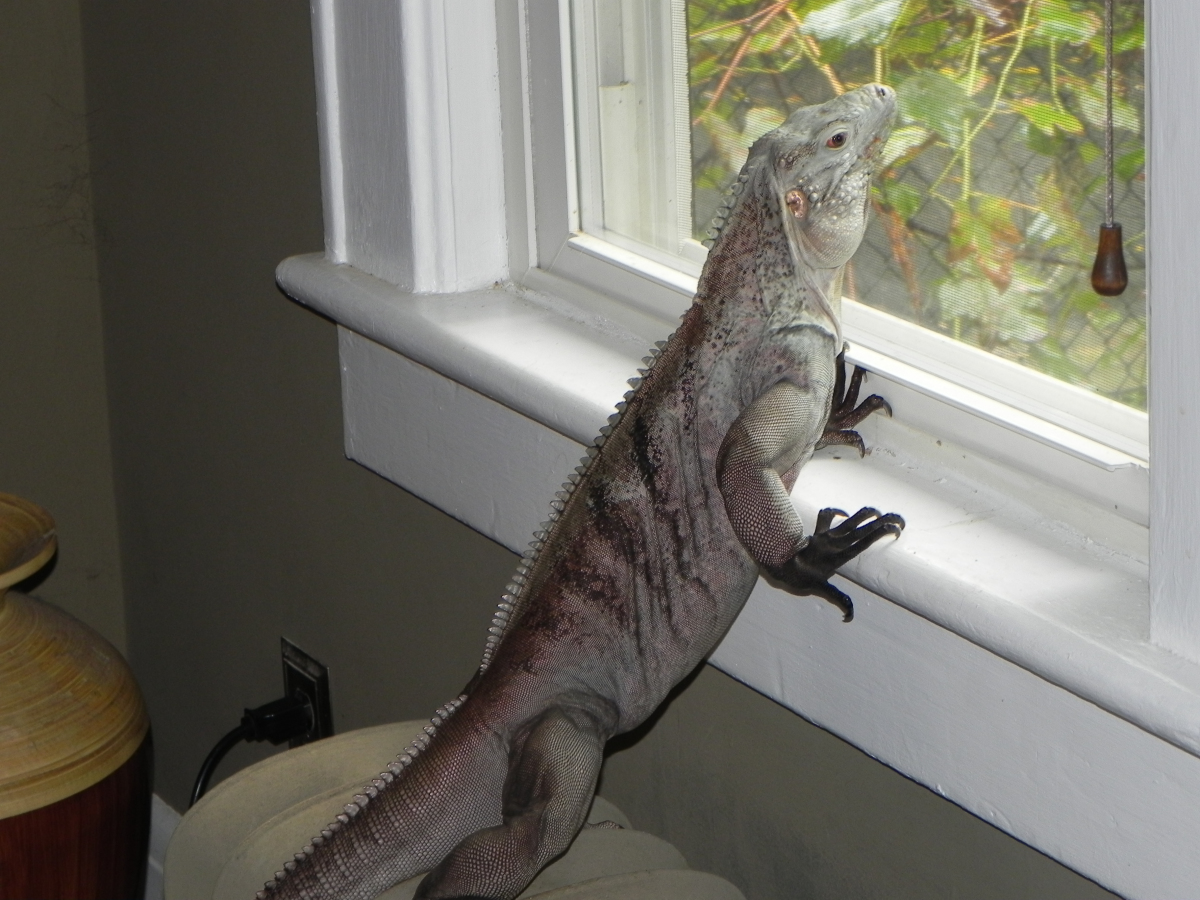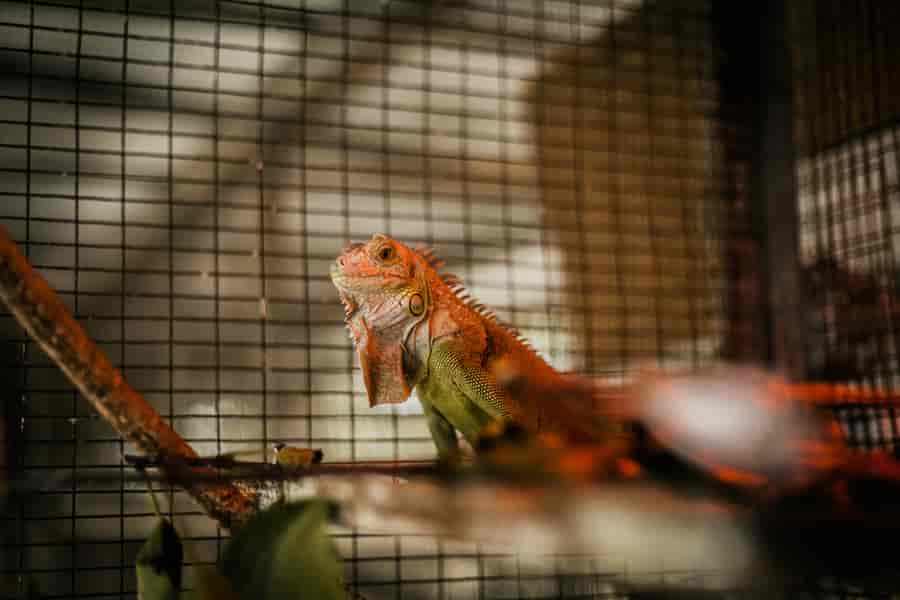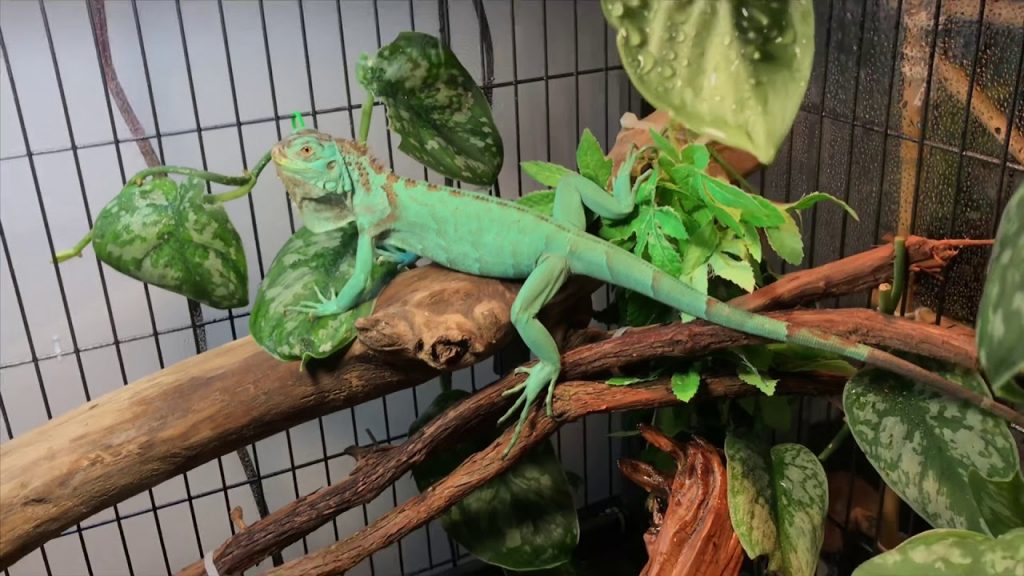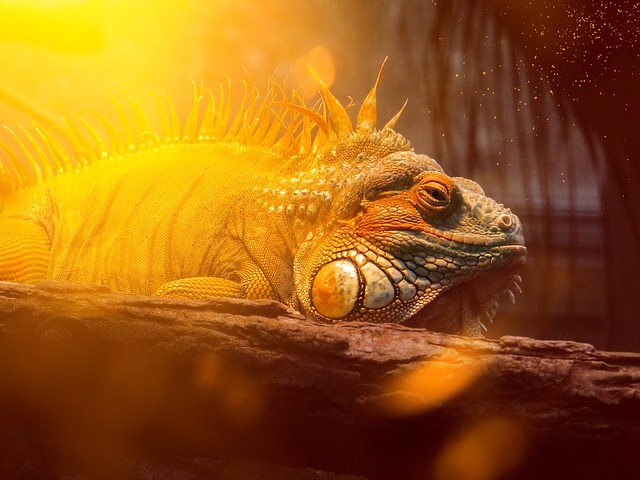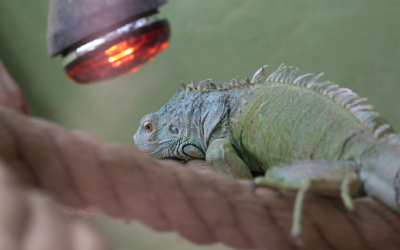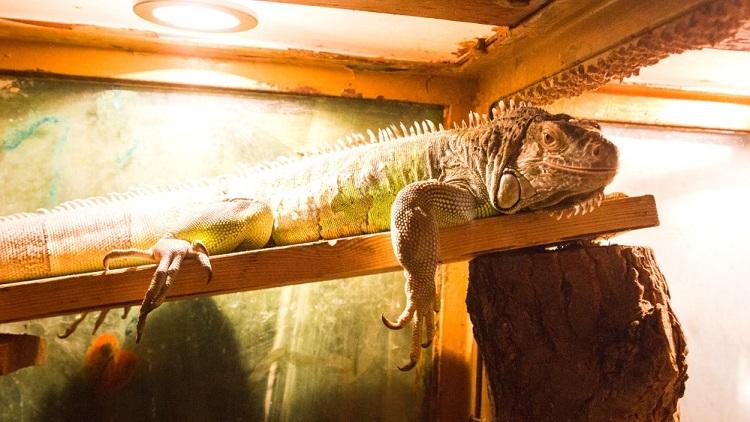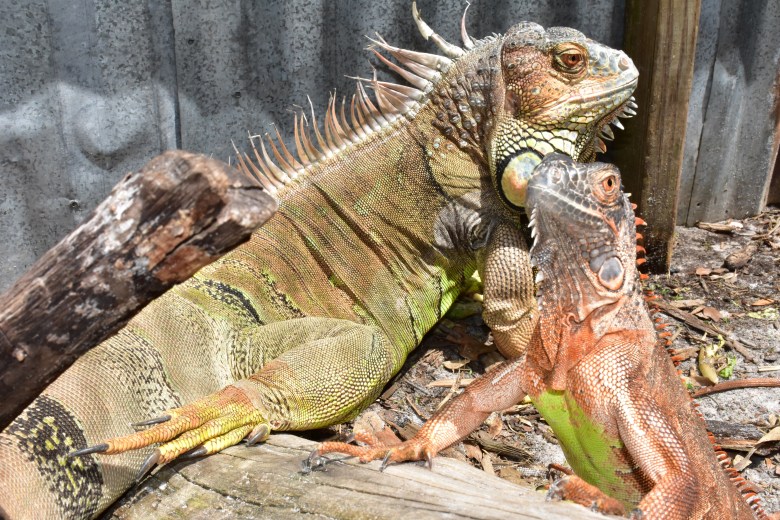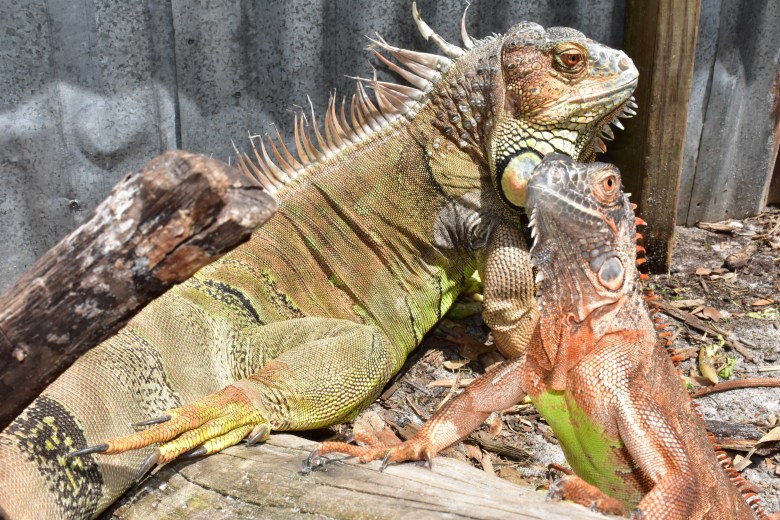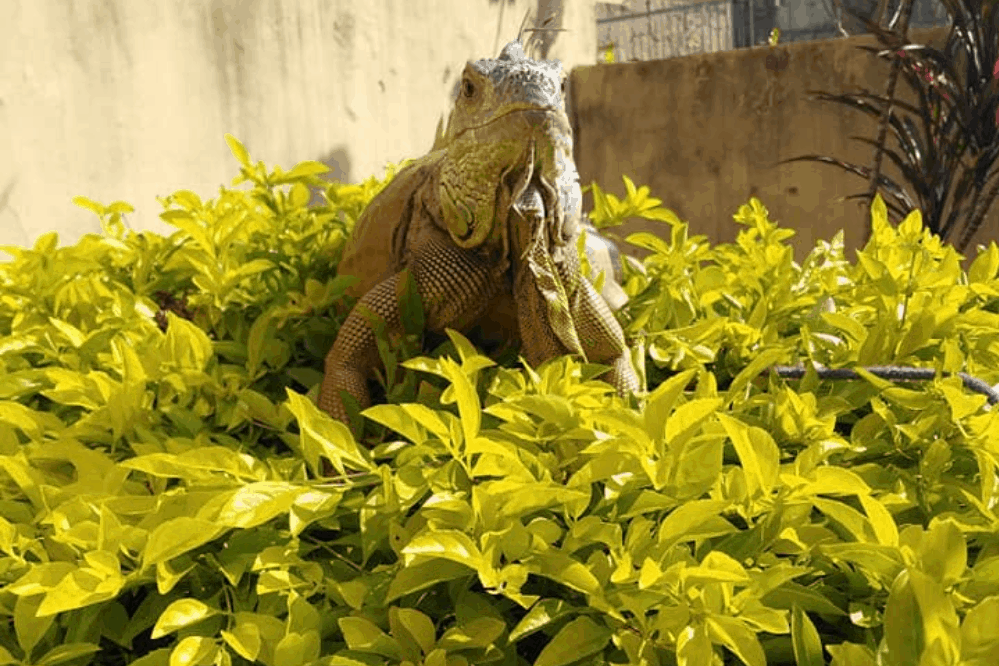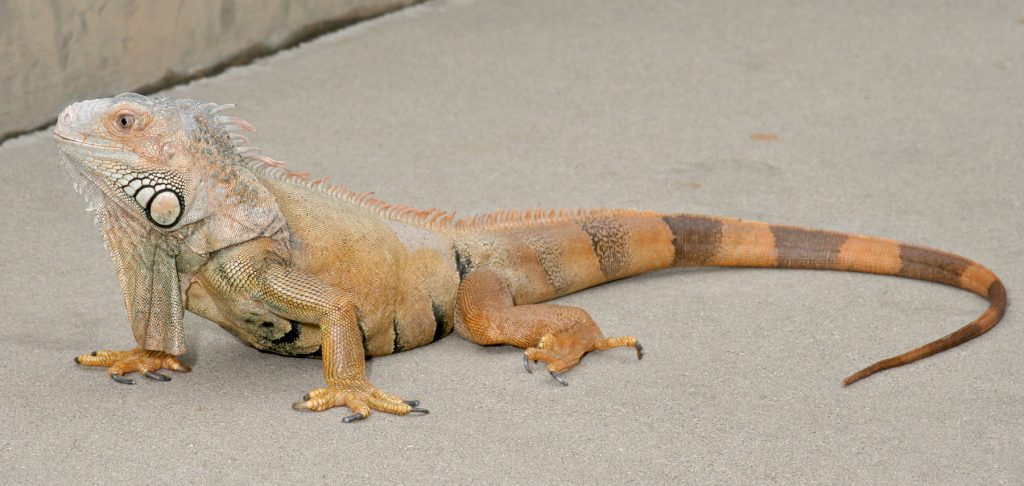Free-Roaming – Many iguana owners like to allow their lizards to roam free throughout the entire house or apartment, or at least one or two rooms. These are viable situations, but many important precautions must first be taken into consideration.
As I will discuss shortly, iguanas need to live in very high temperatures if effective digestion is to take place. You will need to heat the areas that the iguana will occupy. In addition, it is not always particularly easy to potty-train iguanas, who generally defecate daily. Some iguanas will choose a particular spot (or maybe two or three particular spots) and use it faithfully.
In that case, you can place a litter box or newspaper in that spot for easy cleaning. Other iguanas may use a certain area sometimes, but frequently stray from it. Still others will return to a particular spot thanks only to sheer coincidence.
You must be prepared to deal with these daily clean-ups. Iguanas’ stools can stain and many iguana owners already know that some of their lizards’ favorite spots to relieve themselves are on beds and stacks of clean clothes.
In addition to the problem of staining, general hygeine is extremely important. It is easy to put off cleaning an iguana mess if it’s in the corner of a room, but that corner will soon become a breeding ground for harmful bacteria.
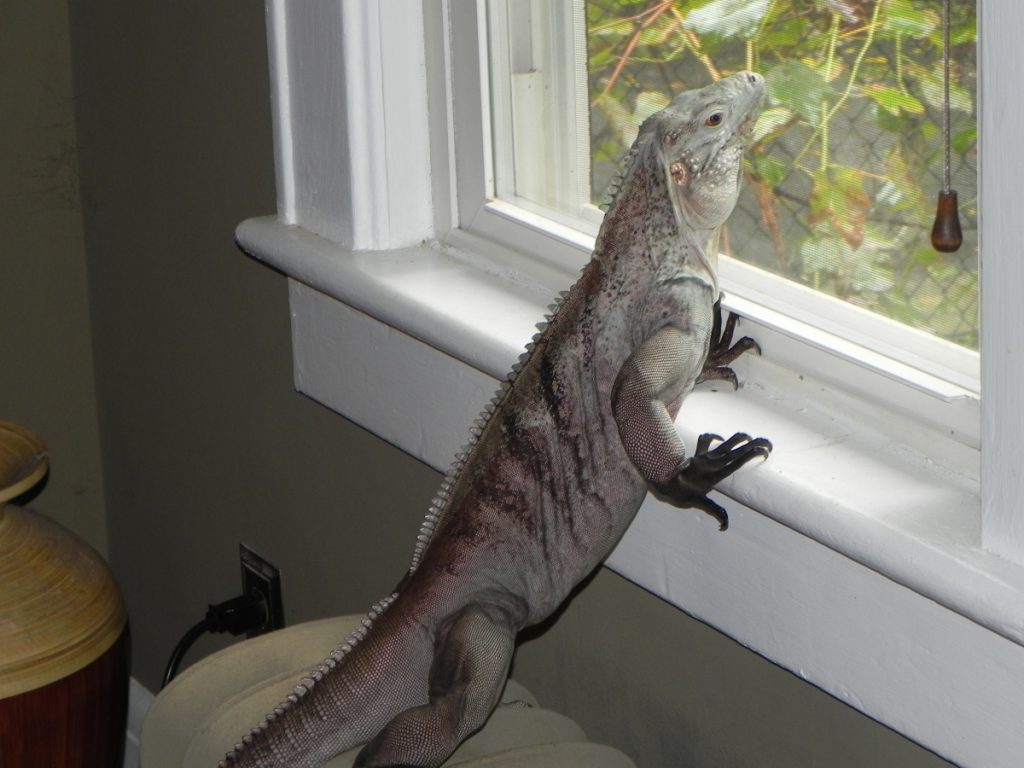
Another important consideration is iguana-proofing the rooms. Iguanas can be even more curious than cats, but unfortunately, tend to be much less graceful. If you have fragile objects on shelves, they are likely to be knocked over and possibly damaged by your iguana. Climbing is facilitated by your iguana’s use of its claws. If much of your furniture is slippery (wood, as opposed to upholstery) your iguana will likely slip off and possibly injure itself. Electrical outlets can also be hazardous. Iguanas can get caught in between radiators and walls, get tangled in stereo wires, burn themselves on lightbulbs, or even decide to hang out underneath heavy furniture for several days at a time, thus missing meals and cooling down. You must also consider the iguana’s general happiness: iguanas are arboreal, which means that they are tree-dwelling in the wild. They will want to climb the furniture, which may be impossible for them if their claws don’t have anything to grab onto. Alternately, their claws might tear holes in your upholstery if too much wanton climbing takes place.
Despite all of the above warnings, there are indeed many iguanas that do share their living space with their owners. A suitable environment can be created if you carefully consider the above precautions. You might even consider adding some large branches to your decor for your iguanas to climb. You might also section off one corner of the room for use as an open cage. If you heat that area, supply branches and feed them there, they may spend much of their time in that area, only leaving for temporary changes of scenery and for exercise. One option is to hang a heat lamp from the ceiling, above your iguana’s basking area. Iguanas like to bask in hot light (like the sun) and generally prefer to do that over merely sitting in a heated room. Some iguana owners are able to devote an entire room to their free-roaming lizards which can be completely iguana-proofed and decorated iguana-style. The air temperature in that room may be raised using a heater, but you should still provide basking sites. If you do choose to let your iguana free-roam, please read the rest of this section so you can learn about their light and temperature requirements.…
